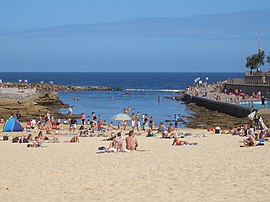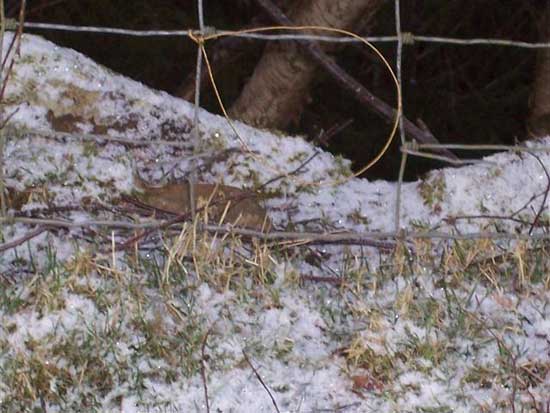It happened slowly, insidiously, and change crept through my life like a thief in the dark. It all appeared unremarkable, at first, something different happened. Some were little things. Houses were being built. Slowly more and more. The trams went and were replaced by diesel buses – smelly belching double-decker behemoths that had none of the finesse of a tram – and the tram lines were ripped up to widen the available carriageway on Victoria Road. The motor servce station, selling fuel and oil, added a small workshop. Then a car sales business started up next to it on the corner of our street and Victoria road. Next I knew they were all one business with a smart newcar showroom. I didn’t notice the extra cars, at first.
Others were big things. Like town gas being connected to homes – bringing new appliances and heating and doing away with wood fires - sewage reticulation was laid to replace the old ‘pan system’ – I didn’t mind that so much. The telephone came to town, party lines at first, individual numbers later but this impacted on my ‘invisibleness’ – my parents could call down the party line for our area and find out where I was, or was last seen. I was now 'trackable' in a region where before I could move around with impunity.
We got television – thrilling at first for those that could afford it – we peered into the radio shop window of an evening to catch a glimpse of “The Mickey Mouse Show” and the “Mouseketeers”. Dad bought us a TV, it was a huge wooden thing, a console model, with the largest screen available. Mum loved it!
They built a “Mall” at Top Ryde – the Rialto was a ‘hold-out’ for a few years but gradually more and more land was resumed around it and then one day it went too. I asked why? The answer was poor patronage and an inability to compete with television. At the same time all the little corner shops began to close, first the greengrocer and then the butcher, followed by the general stores. Some re-opened in the Mall, others just gave up and surrendered.
They built a “Mall” at Top Ryde – the Rialto was a ‘hold-out’ for a few years but gradually more and more land was resumed around it and then one day it went too. I asked why? The answer was poor patronage and an inability to compete with television. At the same time all the little corner shops began to close, first the greengrocer and then the butcher, followed by the general stores. Some re-opened in the Mall, others just gave up and surrendered.
The rabbits disappeared! All these new homes were in-filling their natural environment. I suppose they just ‘moved on’. Didn’t matter, anyway, ‘cos I had no-one to buy the skins as the Grain and Produce store had been pulled down to make way for a new Civic Centre and no-one wanted to buy wild rabbits anyway. My trusty old .22 went up on top of a cupboard and I forgot about it. One day, decades alter, I remembered it – we wanted it for a prop in “Annie get your gun”, a musical production which we were staging at the hospital – I went looking for it and it wasn’t there. I asked my father where it was and he said he sold it to some mate up the Central Coast who was building a weekender up there and was having problems with snakes! Thank you very much, I thought, "Thanks mate, that rifle kept you supplied with meat for the table and you don’t waste bullets on snakes anyway – you bang just them on the head with a shovel if they wont move on!"
I used to train a lot by running the road network in our area. They were mostly unmade roads of well worn clay but then I started to find more and more of them being sealed. Stinky bitumen emulsion poured over gravel and then more gravel added on top and loosely rolled in. It hurt my feet and I soon found I had to run in tennis shoes and not barefoot. I remember running past the Brett’s farmhouse one evening and there was a removals van out the front. I stopped for a minute and asked the boys:
“What’s up? Getting some new furniture?” I asked:
“No!" I was told, "Dad’s sold the farm. There’s no market for his milk and the supermarkets were preferred by householders for fruit and vegetables”
“Where are you going?” I asked.
“Off up north, Dad’s got his eye on some land up at Mt White, near Gosford. We are going to grow oranges for the local soft drink manufacturer.”
“Good luck!” I called over my shoulder as I ran off down the road, my chest feeling rather ‘funny’. I was sad.
When I got home I had a good look around the backyard. The vegetable garden had gone and we had ‘grass’. The fruit trees were badly in need of pruning and many had scale or mite infestation. The chicken run had long ago been converted into a storage place for unwanted materials and goods. All I could see around us were fences and rooftops. It was a case of "Paradise lost". We had traded it for a quarter acre of grass that needed cutting twice a week in summer and every two weeks in winter.
The next few days, as I ran, I looked around and I could see no ‘green’. Wall-to-wall quarter acre housing blocks with neat little 3 bedroom bungalows had locked off access to any remaining bushland. On Buffalo Road I stopped at the bridge and looked down into what had once been a clear, clean, running Buffalo Creek that I used to swim in. It was a stagnant, still, mosquito infested swamp.
My world had changed forever and it had stolen my innocence. I had grown up in a blinkered existence. I went looking for my mates and was told that they were all out – at the Youth Club at the church, I was told. I caught up with one a few days later and asked:
“What the go was?”
“What the go was?”
“Go? Its all go mate! Girls, and lots of them!”
I had never given girls a second glance but here I was well advanced past puberty and once more the world had left me behind. While I had been so pre-occupied with my “bush”, hunting, swimming, training for and playing sport all my male friends had been seduced up to the Youth Club (and I don’t think it took much urging).
On my first visit there I was nervous. I could see all these attractive young girls, laughing and chatting away to the boys, dancing to an old phonograph and they smelt so sweet! I was dumbfounded. All my mates had a girl on their arm – their ‘squeeze’ – as I was to learn. I felt so awkward, so out of place.
“Hello! You are John aren’t you,” said a voice from behind me, “You're the wild one, arn't you?”
I turned around and there was this vision of loveliness.
“I’m Barbara. Would you like to dance?’ The words came out like wild honey flowing from a deep hole in a bush eucalyptus, sweet and just oozed around my ears.
I don’t know how to dance.” I replied.
“Oh, It’s sooooo easy,” she said, “come on, I’ll teach you!” She reached out and took my hand in hers, sliding her other hand up onto my shoulder. I didn’t know what to do with my hands! I let go of her hand and put my arm around her waist, so firm and nice feeling, and then put my other hand up on her shoulder. She looked at me, smiled at that, and said “My, you’re a fast worker!”.
I was a ‘goner’!
And that, dear readers, was the end of my youth and the beginning of my growing up!
*******************************




















